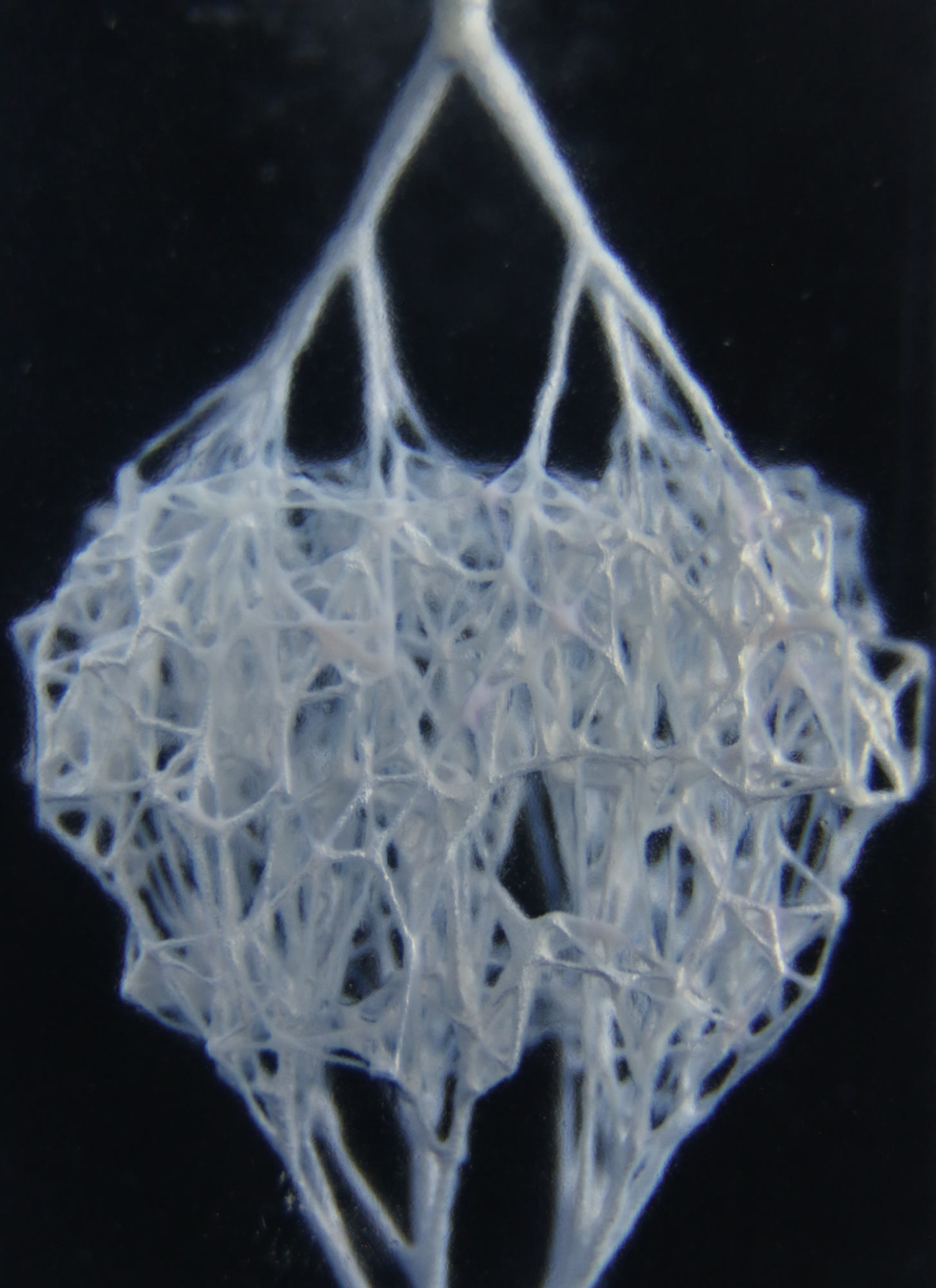Imagine a future where it would be possible to 3D-print a complete robot or stretchy, electronic medical device at the touch of a button, eliminating the need for hours of tedious manual assembly.
 A network of capillaries 3D-printed using a newly developed technique. Image Credit: Hayes et al. 2022, Advanced Materials.
A network of capillaries 3D-printed using a newly developed technique. Image Credit: Hayes et al. 2022, Advanced Materials.
That possibility may be closer than previously thought thanks to the latest advancement in 3D-printing technology. The research headed by engineers at CU Boulder lays out an approach for using current printers to create materials that meld solid and liquid components, a difficult task that might result in the collapse of the robot, in a new study.
I think there’s a future where we could, for example, fabricate a complete system like a robot using this process.
Robert MacCurdy, Study Senior Author and Assistant Professor, Paul M. Rady Department of Mechanical Engineering, University of Colorado Boulder
MacCurdy, along with doctoral students Brandon Hayes and Travis Hainsworth, published their observations on April 14th, 2022, in the journal Additive Manufacturing.
Hobbyists and scientists working in laboratories have had access to 3D printers for a long time. They are great at making plastic dinosaurs and individual machine parts like gears and joints. But, according to MacCurdy, they can do a lot more.
3D printers could create devices that are more dynamic, flexible and potentially more useful by combining solids and liquids. Wearable electronic devices with liquid wires contained within solid substrates, as well as models that mimic the squishiness of real human organs, are among them.
The advancement, according to the engineer, is comparable to conventional printers that print in color rather than black and white.
Color printers combine a small number of primary colors to create a rich range of images. The same is true with materials. If you have a printer that can use multiple kinds of materials, you can combine them in new ways and create a much broader range of mechanical properties.
Robert MacCurdy, Study Senior Author and Assistant Professor, Paul M. Rady Department of Mechanical Engineering, University of Colorado Boulder
Empty Space
Comparing 3D printers to regular printers in the office can help understand those properties. Liquid inks are laid down in thousands of flat pixels by paper printers to create an image. In contrast, inkjet 3D printers use a printhead to drop tiny beads of fluid called “voxels” (a combination of “volume” and “pixel”) one on top of the other.
Very soon after those droplets are deposited, they are exposed to a bright, ultraviolet light. The curable liquids convert into solids within a second or less.
Robert MacCurdy, Study Senior Author and Assistant Professor, Paul M. Rady Department of Mechanical Engineering, University of Colorado Boulder
However, there are several situations in which those liquids should remain liquid, according to him. For example, some engineers use liquids or waxes to create tiny channels within solid materials, which they then empty later. It is similar to how water drips can carve out an underground cavern.
Engineers have devised methods for creating such empty spaces in 3D-printed parts, but cleaning them usually takes a long time and a great deal of effort. The channels must also be kept as simple as possible.
MacCurdy and his coworkers decided to work around these constraints by gaining an insight that would enable engineers to print solid and liquid materials simultaneously.
Liquid Courage
The investigators started by creating a series of computer simulations to investigate the physics of printing different materials next to each other.
Citing one of the major issues, MacCurdy says, “How can you keep your droplets of solid materials from mixing into the liquid materials, even when the droplets of solid material are printed directly on top of the liquid droplets?”
To assist them in doing so, the team established a set of rules.
“We found the surface tension of a liquid can be used to support solid material, but it is helpful to pick a liquid material that is more dense than the solid material—the same physics that allow oil to float on top of water,” Hayes added.
The scientists then used a real 3D printer in the laboratory to test their findings. They loaded a curable polymer, or plastic (the solid), into the printer, as well as a standard cleaning solution (the liquid). The team was able to 3D-print twisting loops of liquid and a complex network of channels that looked similar to the branching pathways in a human lung.
“Both structures would have been nearly impossible to make through previous approaches,” Hainsworth remarks.
MacCurdy has also recently joined a team of CU Boulder and CU Anschutz Medical Campus researchers working on ways to 3D-print realistic human tissue models. These models could be used by doctors to practice procedures and make diagnoses. Among other tools, the project will use MacCurdy’s liquid–solid approach.
“We hope our results will make multimaterial inkjet 3D printing using liquids and solids more accessible to researchers and enthusiasts around the world,” MacCurdy concludes.
Journal Reference:
Hayes, B., et al. (2022) Liquid-solid co-printing of multi-material 3D fluidic devices via material jetting. Additive Manufacturing. doi.org/10.1016/j.addma.2022.102785.